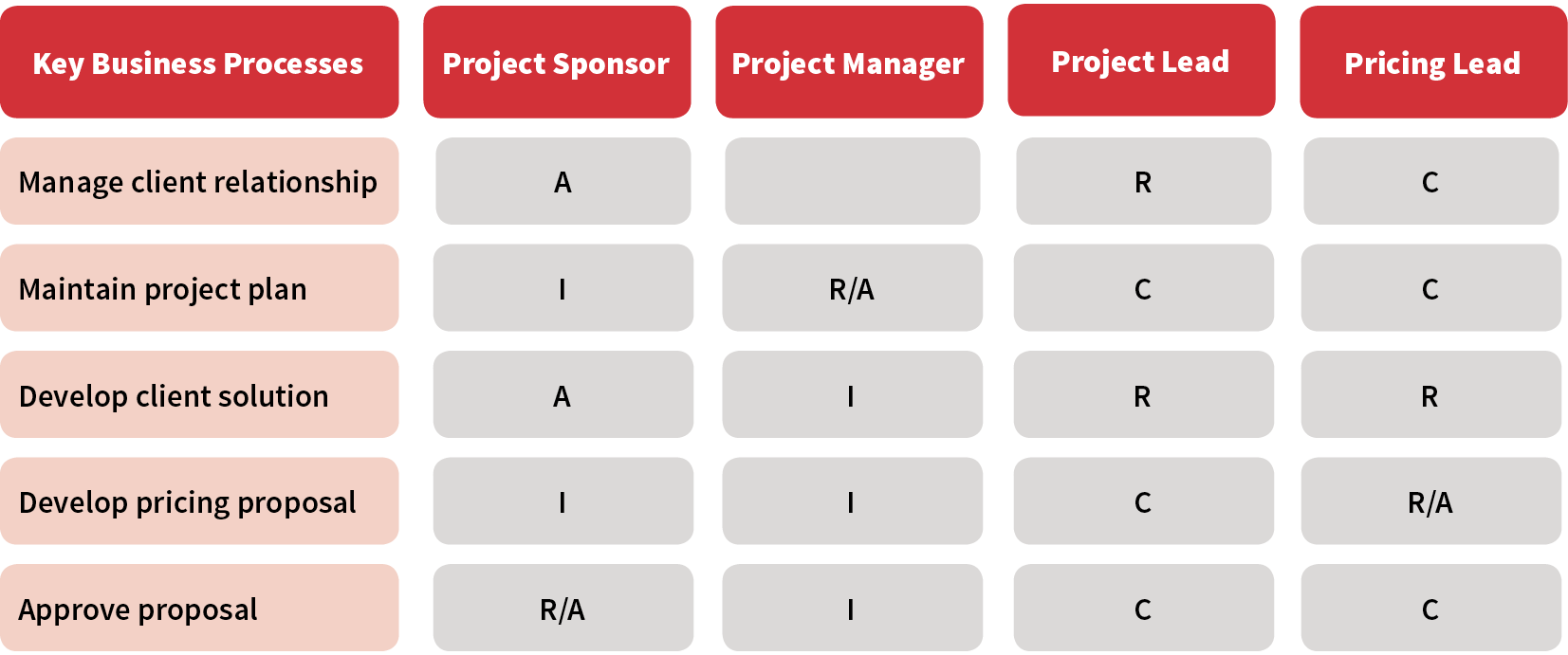Truly Managing Change
October/November 2019
When one of RGA’s global divisions combined two functional areas into one, a great deal of work went into it. A compelling story for change was shared, employees took part in developing the team’s new look, and information was disseminated regularly throughout the process.
One of the process changes sought by department leadership was whether greater efficiency could result from replicating a function in our international offices in the United States. Good change management meant beginning with conversations about the function and its components both in the United States and internationally, and what might need to happen for a smooth unification. During the discussions, a key challenge—time zone differences—was uncovered. Being in different time zones might make the process less efficient to standardize. Still, for clarity about why it still might be the best decision, we built a RACI chart (see Figure 1).
Figure 1: RACI Chart—Responsibility Assignment Matrix

At least one responsible and only one accountable person are designated for each task. Optional consulted and informed roles may be identified.
RACI is an acronym for a well-known project management tool with many possible applications. It lists key process steps and identifies, for each step, who is responsible (does the work), accountable (ensures the step is done), consulted (provides input) and informed (is told of the outcome).
Developing the chart for this process was an eye-opener. Numerous inconsistent steps—without compelling reasons for the inconsistencies—were discovered and subsequently addressed, making for more efficient processes worldwide.
Although the process did not ultimately result in the change first sought, it had several benefits: It gave new and needed clarity to roles and responsibilities, provided a common understanding of the process and its components, and facilitated faster decision-making and improved partnering.
Sometimes the right answer is not change, but rather making mindful and informed decisions about change. Change that is helpful and useful, and introduced and communicated in a way that helps people consider the possibilities instead of resisting them, can truly help build change-ready minds.
Return to Leadership—A New View
Copyright © 2019 by the Society of Actuaries, Chicago, Illinois.
